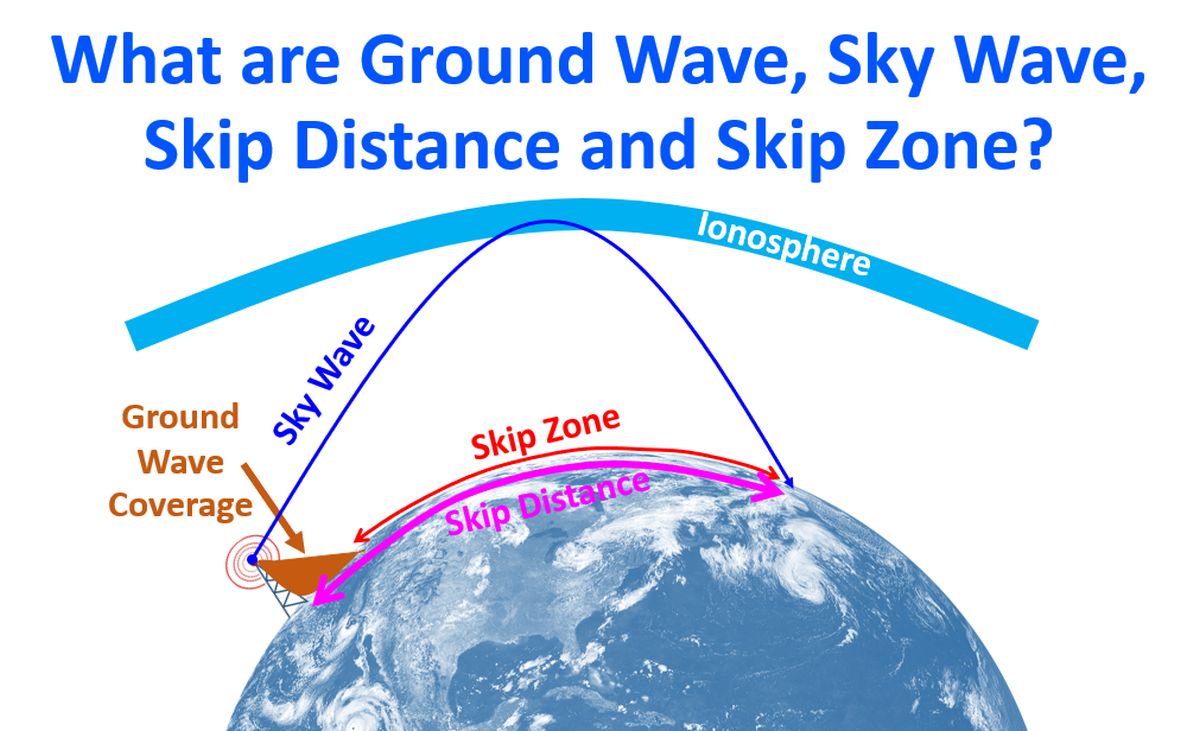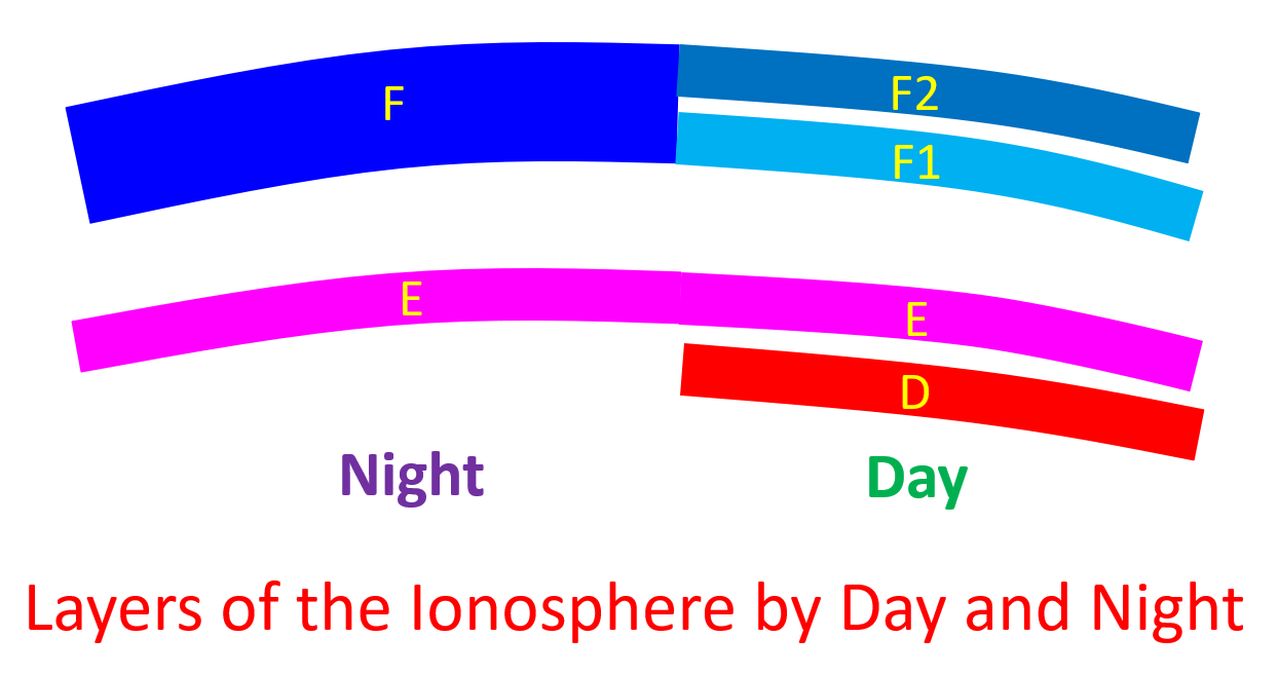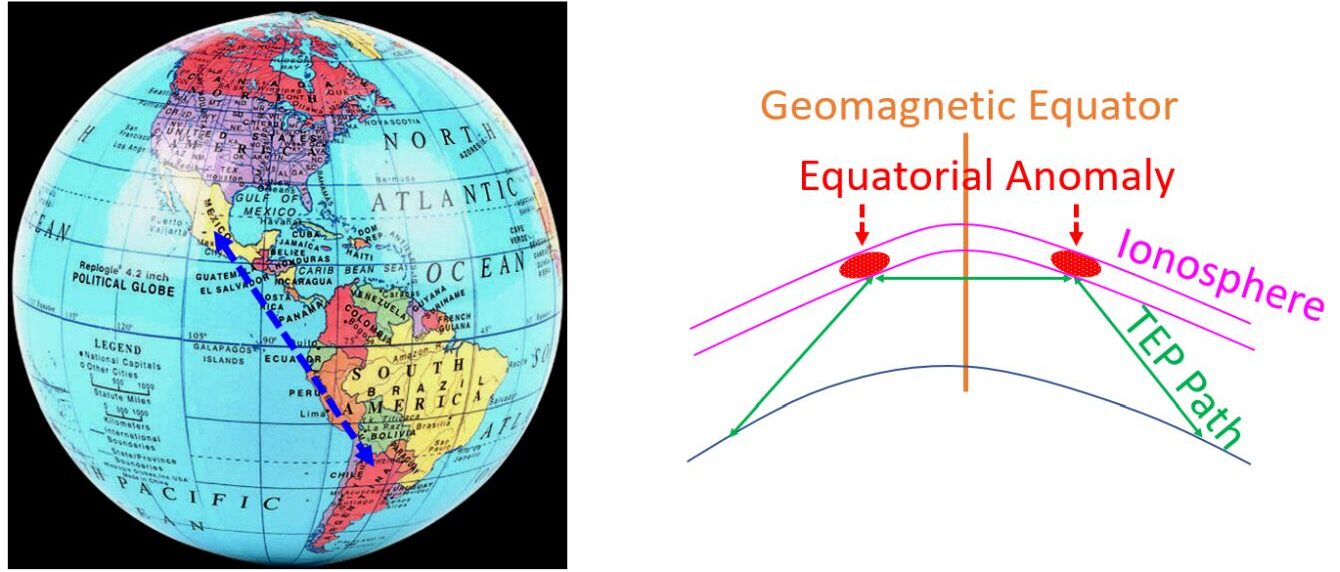What are Ground Wave, Sky Wave, Skip Distance and Skip Zone?
What are Ground Wave, Sky Wave, Skip Distance and Skip Zone?
These are terms which are often discussed while talking about amateur radio propagation. Electromagnetic waves emanating from the radio which travels along the surface of the earth are known as ground waves. They have a limited range and are useful for communication at lower end of the radio spectrum. Sky waves are those electromagnetic waves which travel towards the sky and depending on the frequency, may get reflected back to the earth. The minimum distance at which the sky wave reaches the earth from the radio is known as skip distance. Distance from the range of the ground wave and the minimum skip distance at which the sky wave can be received is known as the skip zone or dead zone.

The skip distance depends on the angle at which the radio wave reaches the ionosphere, layer of the ionosphere where it gets reflected, ionization status of the layer and the transmitted frequency. In general, higher frequencies have higher skip distance so that 14 MHz signal makes a longer hop than 7 MHz signal. That is why 7 MHz is popular for local contacts while 14 MHz is popular for DX or long distance communications.
Critical frequency is the maximum frequency at which total internal reflection occurs from the ionosphere. Higher frequencies travel further outwards without getting reflected back to the earth. Critical frequency fc in Hz = 9√Nmax, where Nmax is the maximum electron density per cubic meter. Maximum usable frequency (MUF) is dependent on the angle of incidence θ. MUF = critical frequency/cosθ. There is also an optimum working frequency or OWF which is 0.85MUF. Maximum usable frequency and optimum working frequency are with reference to communication between two given points at given time.
Ground wave is mostly useful for medium wave broadcast. Medium waves reaching the D layer of the ionosphere are absorbed and does not get reflected. As discussed earlier, D region disappears at night and the signals may reach the higher layers of the ionosphere and get reflected. That is why we are often able to hear medium wave stations a higher distance at night, but not during day. Ground wave coverage is more at lower frequencies. Typical range of a medium frequency may be 100 miles while it may be just a mile or two at frequencies higher than 10 MHz.

Short waves usually penetrate the D layer and reaches the E layer where it is reflected and is received beyond the skip distance. Higher frequencies penetrate the E layer and reach the F1 layer where it is reflected. As this reflection occurs from a higher region, the distance at which it is received is greater, with a longer skip distance, as discussed in difference in transmission range for 7MHz and 14 MHz. When the frequency is higher than that can be reflected by the F1 layer, it reaches the F2 layer of the ionosphere. In general, the maximum skip distance for E layer is around 2500 km while that for F2 layer is 5000 km.
This can change depending on the level of ionization between day and night as well as other conditions which change the level of ionization. Sky wave reaching the ground can get reflected back to the sky and take multiple hops, with diminishing intensity as reflection from the ground is lossy, unlike reflection from the ionosphere. Usually VHF, UHF and beyond are not reflected by the ionosphere and are useful for satellite communications. Terrestrial communications at those frequencies are limited to line of sight transmissions, except in unusual conditions like sporadic E, transequatorial and auroral propagations discussed earlier.
